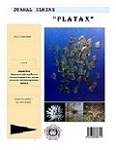Antibacterial Potential of Soft Coral Lobophytum sp. From Pangalisang Waters of Bunaken Island to Pseudomonas aeruginosa and Staphylococcus aure
DOI:
https://doi.org/10.35800/jip.6.2.2018.20638Abstract
Soft corals ar known to have a variety of bioactivity capabilities, one of them is antibacterial. Antibacterial is a compound that can interfere with the growth of bacteria or even kill the bacteria. The soft coral samples, Lobophytum sp., obtained from Pangalisang, Bunaken Island, wer extracted by evaporative process, then fractionated into three fractions by aqueous partitioning technique with aqueous solvents, ethyl acetate, methanol and n-hexane. Antibacterial testing, with bacterial samples of Pseudomonas aeruginaso and Staphylococcus aureus were analyzed by agar diffusion / Kirby Bauer method. The results of the experiment showed that every fraction had antibacterial activity, where the largest activity was produce at concentration of 50 disc paper sampes with  7 mm (water fraction), 8 mm ( metanol fraction), 7,2 mm (n-hexane fraction) in Pseudomonas aeruginosa and 7 mm (water fraction), 8,7 mm ( metanol fraction) in Staphylcoccus aureus. It can be concluded that the inhibition zone from soft corals, Lobophytum sp., is classified as a weak activity, so it does not potential to be developed into an antibacterial drug.
Keywords: Antibacterial, Lobophytum sp., Pseudomonas aeruginosa, Staphylcoccus aureus.
ABSTRAK
Karang lunak diketahui mempunyai berbagai bioaktivitas salah satunya antibakteri. Antibakteri merupakan senyawa yang dapat mengganggu pertumbuhan atau bahkan dapat mematikan bakteri. Sampel karang lunak Lobophytum sp. yang diperoleh dari perairan Pangalisang Pulau Bunaken diambil ekstrak kentalnya melalui proses evaporasi, selanjutnya difraksinasi menjadi tiga fraksi dengan teknik partisi cair dengan pelarut aquades, etil asetat, metanol dan n-heksan. Pengujian antibakteri terhadap bakteri Pseudomonas aeruginosa dan Staphylococcus aureus dianalisis dengan metode difusi agar (disc diffusion Kirby and Bauer). Hasil penelitian menunjukan ketiga fraksi memiliki aktivitas antibakteri, dimana aktivitas terbesar dihasilkan pada konsentrasi sampel dalam kertas cakram 50 μl dengan zona hambat 7mm (fraksi air), 8 mm (fraksi metanol), 7,2 mm (fraksi n-heksan) pada Pseudomonas aeruginosa dan 7 mm (fraksi air), 8,7 mm (fraksi metanol) pada Staphylococcuss aureus. Dapat disimpulkan bahwa zona hambat yang dihasilkan karang lunak Lobophytum sp. tergolong lemah sehingga tidak berpotensi untuk dikembangkan sebagai obat antibakteri.
Kata kunci: Antibakteri, Lobophytum sp., Pseudomonas aeruginosa, Staphylcoccus aureus.
Downloads
Published
How to Cite
Issue
Section
License
COPYRIGHT
Authors who publish with this journal agree to the following terms:
Authors hold their copyright and grant this journal the privilege of first publication, with the work simultaneously licensed under a Creative Commons Attribution License that permits others to impart the work with an acknowledgment of the work's origin and initial publication by this journal.
Authors can enter into separate or additional contractual arrangements for the non-exclusive distribution of the journal's published version of the work (for example, post it to an institutional repository or publish it in a book), with an acknowledgment of its underlying publication in this journal.
Authors are permitted and encouraged to post their work online (for example, in institutional repositories or on their website) as it can lead to productive exchanges, as well as earlier and greater citation of the published work (See The Effect of Open Access).




















